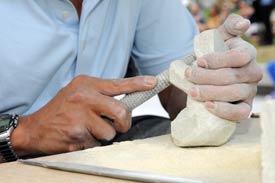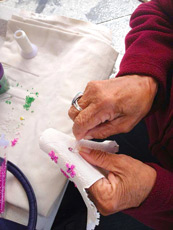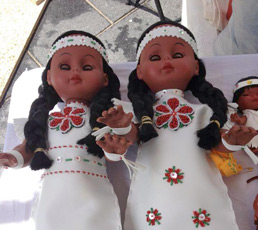Traditional crafts
If stones could talk
 Since the mid-20th century, Inuit art has experienced a phenomenal development. Since then, it has provided income to Northern communities derived from exportation of artworks while promoting Inuit cultural expression in a changing world.
Since the mid-20th century, Inuit art has experienced a phenomenal development. Since then, it has provided income to Northern communities derived from exportation of artworks while promoting Inuit cultural expression in a changing world.
Can sculpture and printmaking play a similar identity role among Inuit people in an urban setting?
Indeed, during the last two decades, more and more Inuit have emigrated to the South. In cities such as Montreal, the Inuit community faces many challenges caused by integration problems, sometimes going as far as homelessness.
The Société de développement social de Ville-Marie (SDSVM), the first social values broker in North America, makes the bet that art can be an important means of social integration and mobilization.
For a second consecutive year, Montreal Inuit artists will create unique works of art “live”. A “tupiq”, a traditional tundra dwelling, will announce their presence on Place des Festivals to share the richness of Inuit art with the public.
An SDSVM project in partnership with Makivik Corporation, AVATAQ Cultural Institute, Saint Michael’s Mission, Projet Autochtone du Québec, the Quartier des spectacles and Terres en vues.
Sedalia Fazio et Rita Jacobs Fazio
Sedalia Fazio et sa mère, Rita Jacobs Fazio sont toutes deux Mohawks de Kahnawake. Rita a 83 ans, et elle fait du perlage depuis son enfance, tout comme sa fille. Sedalia fait aussi de la danse depuis l’âge de deux ans. Aujourd’hui, même si son état de santé l’empêche de danser, elle continue de chanter et de diriger des cérémonies de tente de sudation au bénéfice de la communauté autochtone urbaine de Montréal.


Live sculpture
Place des Festivals
Place des Festivals
Place des Festivals
Cyril Sacobie
Place des Festivals
Place des Festivals
Place des Festivals

